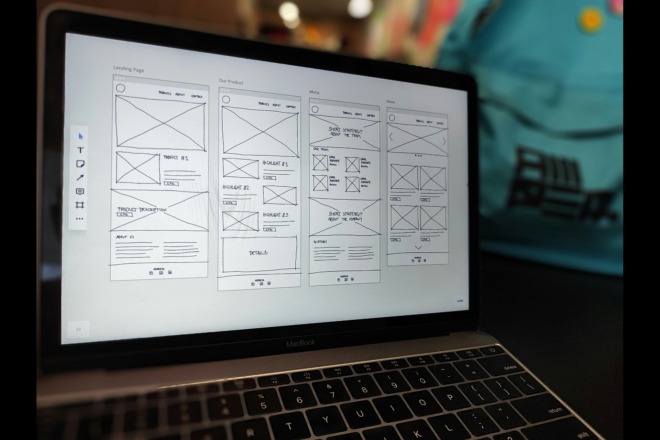Headless WordPress transforms how websites are built and managed by separating the back-end content management from the front-end user experience. Unlike traditional WordPress — where everything is tightly connected — headless systems use APIs to deliver content to any platform, from websites and mobile apps to smart devices.
This approach solves many of the limitations of conventional setups, such as slow performance on large sites, limited design flexibility and difficulties delivering content across multiple channels. Embracing headless WordPress allows businesses to create faster, more customizable and scalable digital experiences. These offerings are tailored to today’s diverse and dynamic audience needs.
What Is Headless WordPress?
Headless WordPress operates on a decoupled architecture, separating the back end, where organizations create and manage content, from the front end, where content is displayed to users. In traditional WordPress, the front end and back end are tightly intertwined. Meanwhile, a headless setup uses APIs to deliver content to virtually any platform — websites, mobile apps or smart devices.
This means a headless CMS doesn’t dictate how content looks or functions, giving developers complete freedom to design unique and engaging user experiences using modern frameworks. For businesses, this flexibility translates to faster websites, better scalability and the ability to meet audiences wherever they are, whether on the web or beyond.
How It Works and Who Uses It
APIs are the backbone of headless WordPress, enabling seamless content delivery to any platform or device. These tools allow content stored in WordPress to be retrieved and displayed on websites, mobile apps, IoT devices or kiosks. This flexibility makes it especially valuable for industries like e-commerce, media and Saas, where fast, tailored and scalable digital experiences are critical.
In fact, 64% of enterprise organizations adopted headless e-commerce solutions in 2021. This highlights its growing popularity and effectiveness in driving performance and user engagement. By embracing this technology, businesses in these industries can deliver personalized, lightning-fast experiences that keep pace with evolving customer expectations.

Benefits of Headless WordPress
Improved Website Performance
Headless WordPress delivers lightning-fast page load times by leveraging lightweight front-end frameworks, which work seamlessly with APIs to fetch only the necessary content. Unlike traditional systems — where the server handles the heavy lifting of rendering pages — this streamlined approach ensures faster performance and smoother browsing experiences.
This boost in speed makes users happy and is vital in SEO rankings and conversion rates. Search engines prioritize fast-loading sites and visitors are far more likely to engage with a website that delivers instant results. For businesses, this means better visibility, higher engagement and more opportunities to convert leads into loyal customers.
Enhanced Flexibility
Headless architecture offers unmatched flexibility for designing unique front-end experiences, enabling brands to break free from the constraints of traditional WordPress themes and templates. Separating the front end from the back end allows businesses to use modern technologies to build digital experiences that align perfectly with their specific goals and audience expectations.
This freedom is pivotal, with 76% of brands using headless systems reporting greater customization capabilities. Whether creating a sleek, responsive website or a dynamic mobile app, headless WordPress empowers businesses to craft innovative, tailored interfaces that elevate their digital presence and resonate with users.
Omnichannel Content Delivery
Headless systems empower brands to deliver content seamlessly across multiple platforms — from websites and mobile apps to IoT devices — ensuring a consistent and engaging user experience. This omnichannel approach is crucial for businesses with diverse audiences, as it enables marketers to tailor content delivery to meet the unique preferences of each platform’s users.
Beyond consistency, headless WordPress enhances personalization by integrating with automation tools and leveraging audience data. Marketers can use these insights to send personalized messages through push notifications, email campaigns or in-app content, helping brands connect with their audience. This boosts engagement and strengthens loyalty by delivering the right message to the right audience at the right time.
Better Scalability
Headless architecture is built to handle the demands of growing businesses by accommodating increased traffic and expanding content needs without compromising performance. Its traditional counterpart hinders scaling due to the tight connection between the front end and back end. Meanwhile, a headless WordPress allows each to scale independently.
For example, an e-commerce site experiencing a holiday sales surge can enhance its front-end infrastructure to handle higher traffic without overhauling its back-end systems. Similarly, a media platform managing large volumes of content can optimize delivery without affecting the content creation process. This scalability ensures businesses can grow while maintaining a seamless and responsive user experience.
Stronger Security
Headless WordPress significantly reduces exposure to common vulnerabilities, particularly those caused by plugin exploits, which account for over 55% of WordPress attacks. In a traditional setup, the interconnectedness of the front and back ends makes the system more vulnerable if a third party compromises the plugin or theme.
However, with headless WordPress, the front end is completely separate from the back end, creating an additional layer of security. Even if malicious actors target the back end, the front end remains isolated and unaffected, safeguarding user data and ensuring uninterrupted performance. This enhanced security is crucial for businesses to build trust and protect their digital assets in threat-filled online spaces.

Challenges and Considerations
Increased Complexity
Headless systems offer unmatched flexibility and performance, but it comes with the trade-off of requiring technical expertise for setup and ongoing maintenance. Their traditional counterpart allows non-technical users to manage updates and configurations easily. Conversely, a headless setup often relies on developers to integrate APIs, build custom front-end solutions and troubleshoot issues.
Businesses may also need developer support for updates or modifications to ensure the system continues running smoothly. While this reliance can increase initial costs and complexity, the long-term benefits of scalability, speed and customization often outweigh these challenges for companies.
Higher Initial Costs
Investing in headless WordPress often involves higher upfront costs due to the need for custom front-end development. Unlike traditional WordPress — where themes and templates streamline the design process — a headless setup requires a developer to build a unique front end tailored to the business’s needs.
Additionally, businesses may need to budget separately for the CMS, developer services and infrastructure to host their site or app. While this can initially feel like a significant expense, the long-term ROI often justifies the investment. With faster performance, improved scalability and the ability to deliver content across multiple platforms, businesses can attract more users, improve conversions and future-proof their digital presence.
Not Suitable for All Businesses
While a headless WordPress offers advanced flexibility and performance, a traditional WordPress setup remains a better option for many businesses, especially those with straightforward needs. For small businesses or organizations with limited technical resources, the ease of use, built-in themes and plugins of traditional WordPress make it an ideal choice. It allows users to create and manage websites without requiring advanced technical skills or developer support.
Additionally, for blogs, small e-commerce sites or informational websites that don’t need complex functionality or omnichannel content delivery, the simplicity and cost-effectiveness of a traditional setup outweigh the benefits of headless WordPress. Businesses with tight budgets or those prioritizing a quick launch can also benefit from conventional systems, as they provide an all-in-one solution without needing custom development or separate hosting infrastructure.
Unlock the Marketing Power of Headless WordPress
Headless WordPress can transform websites into powerful marketing and engagement tools by delivering faster performance, personalized experience and seamless omnichannel content delivery. Businesses ready to elevate their digital presence can explore the benefits of headless WordPress or consult with experts to create a solution tailored to their needs.
About The Author
Cooper Adwin is the Assistant Editor of Designerly Magazine. With several years of experience as a social media manager for a design company, Cooper particularly enjoys focusing on social and design news and topics that help brands create a seamless social media presence. Outside of Designerly, you can find Cooper playing D&D with friends or curled up with his cat and a good book.


